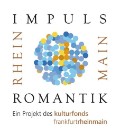Here you will find more information about the history of the Romanticism and our themed tours about it.
German Romanticism
On the road with princes and composers and on the trail of the blue flower
Romanticism developed primarily in Germany around 1800 – as a stylistic epoch in art and literature – following on from the Age of Classics and the Enlightenment. In the 17th and 18th centuries, “Romance” or “romantic” still meant “occurring in a novel” in a disparaging sense. To many, the Romanticism mindset was seen as a backward-looking current that attached greater importance to the mysterious, the mystical and the urge for religious refuges, in contrast to the achievements of the Enlightenment. Romantic currents also existed in other countries such as Italy, France and England. Due to the rather unique development in Germany, this epoch is specifically referred to as “German Romanticism”. In the late 18th century, the meaning of Romanticism as a term changed – everyday and banal occurrences are exaggerated, mysteriously disguised, exaggerated and rapturous feelings, even unrealistic ideas, are used. Quoting Novalis, the “…ordinary is given quality…” and reality is enchanted.
Historically, the emergence of Romanticism was linked to the cities of Jena, Berlin and Heidelberg. Frankfurt and its environs were the melting pot – from here, universal poetic, emotional, utopian, but also political messages were spread throughout Europe via literature, music, the fine arts and the sciences.
The cultural-historical epoch of Romanticism lasted from the end of the 18th century until well into the 19th century. It expressed itself particularly in the fields of fine arts, literature and music.
In Romantic literature (ca. 1795-1848), a distinction is made between Early Romanticism up to 1804, High Romanticism up to 1815 and Late Romanticism up to 1848. In painting, Late Romanticism lasted until the end of the 19th century, in music until the beginning of the 20th century. The Romanticist perceives a rupture that has divided the world into the world of reason, of “numbers and figures”, according to Novalis, and the world of feeling and the miraculous. The driving force of German Romanticism is a longing, directed towards infinity, for the healing of the world, for the bringing together of opposites into a harmonious whole. Symbolic places and manifestations of this longing are:
Mist-covered forest valleys, medieval monastery ruins, ancient myths and fairy tales, nature, etc.
The central symbol for this longing and its goal is the blue flower, which embodies the romantic search for inner unity, healing and infinity like no other motif.
“But the blue flower is that which everyone seeks without knowing it himself, call it God, eternity or love.”
Ricarda Huch
In contemporary usage, the words romance and romantic usually denote a sentimental state of feeling, perhaps of longing. Expressions such as “romantic hours” or “romantic wine bar” are typical. The word romance, which originally denoted the literary genre of romance, has become common for a “romantic affair”. This word also reflects the development of the romantic idea from the historical era to the world of today.
Sources: State Palaces and Gardens of Hesse / German Romanticism Museum Frankfurt / https://wortwuchs.net/literaturepochen/romantik / Ricarda Huch / https://de.wikipedia.org/wiki/Romantik
Related Romantic Hikes
The “ Romanticism Rhine Main” – app
With the app, which is available for iPhone and Android, you can track down places and areas in the Rhine-Main region by mobile phone and immerse yourself authentically in the world of Romanticism through offerings in literature, art, history and nature – with texts, pictures, audio pieces and much more. Sites of the past and present can be discovered in a whole new way from the perspective of the epoch companions of Novalis, Clemens Brentano or the Brothers Grimm.
For the first time, the culture app summarises the significance of the RhineMain region for Romanticism and takes you on its trail to gardens, parks, landscapes, castles and fortresses, towns, museums and monuments. Continuously expanded with new offers, you will be accompanied, partly with audio experience, to excursions, events, tours and walks. Detailed information on people, diaries, travelogues and poems round off the range of
Further information about the app
Watch a short video about the app
cult-touren in cooperation with:


Blue flower
If you visit enough stations and collect virtual blue flowers on site, you can expect interesting perks such as visitor magazines, reduced and free admission, books, insights into complementary research and vegetables from Seligenstadt Abbey.
Sources: Wikipedia, Romanticism Rhine Main App, State Palaces and Gardens of Hesse.
